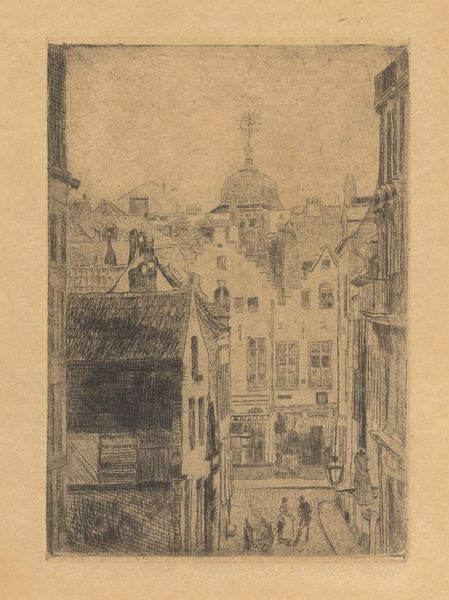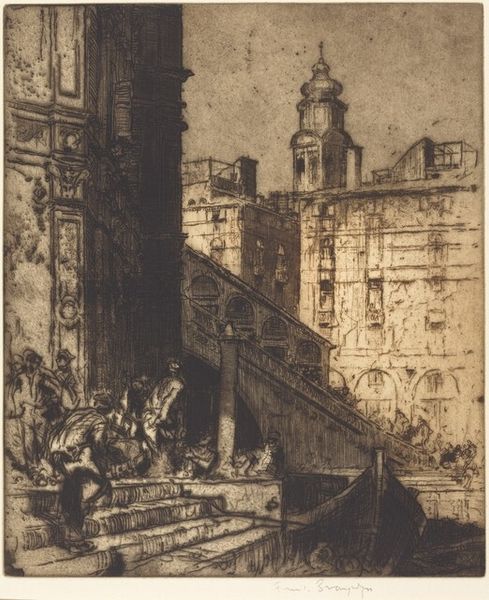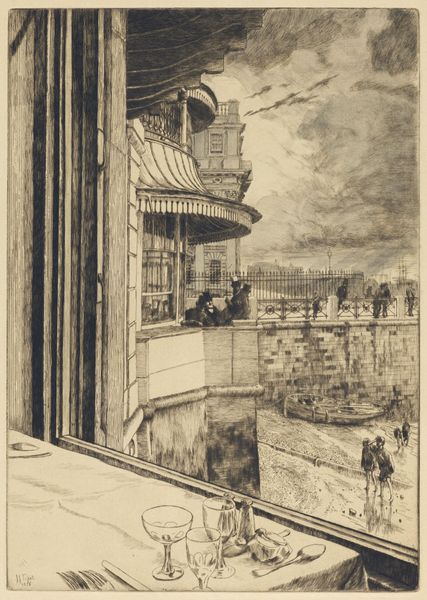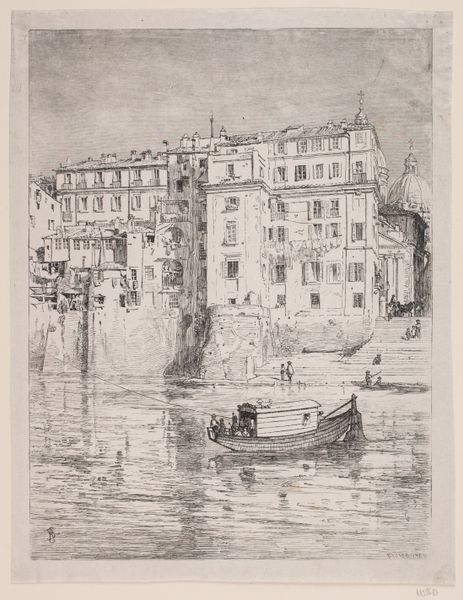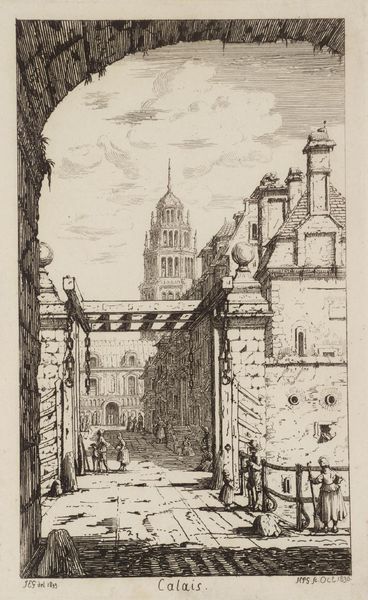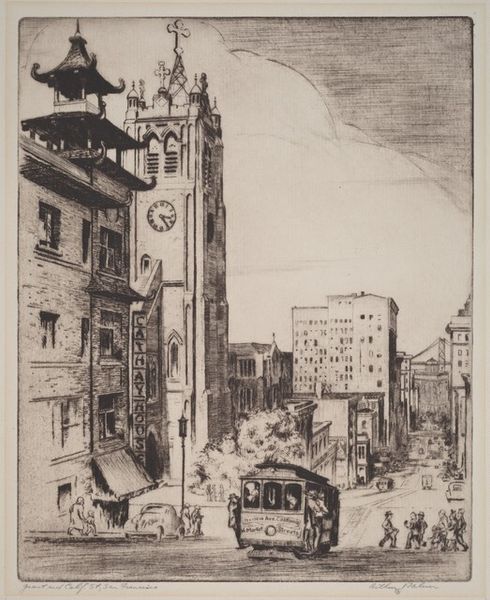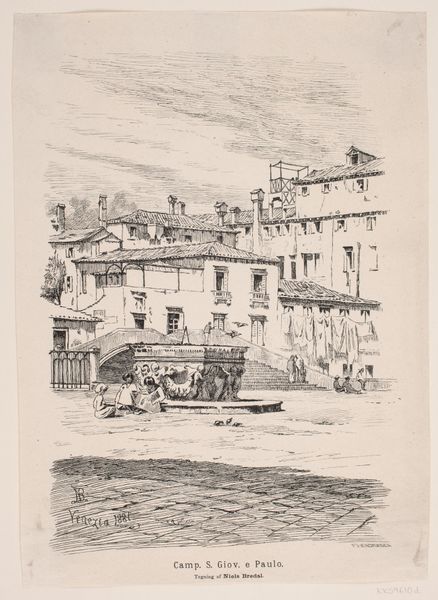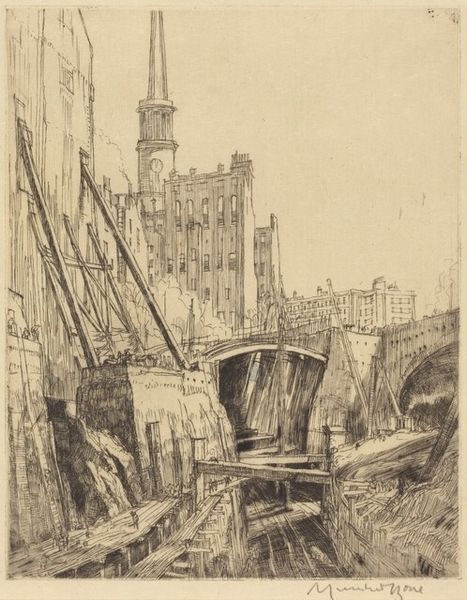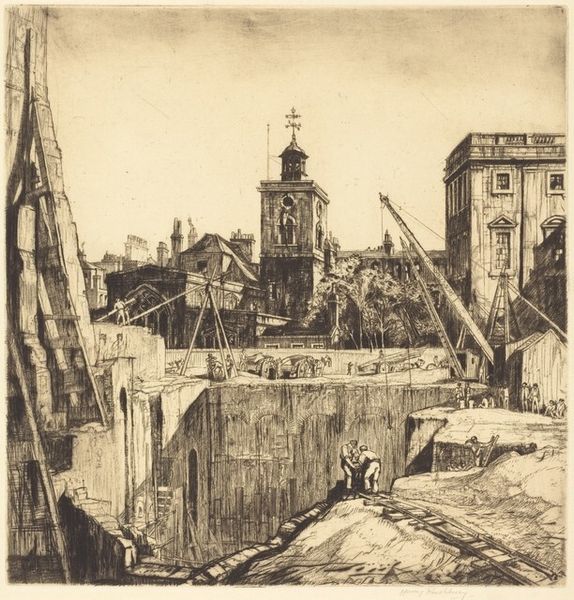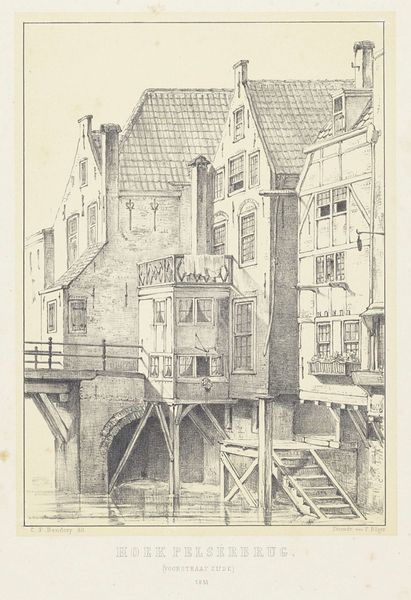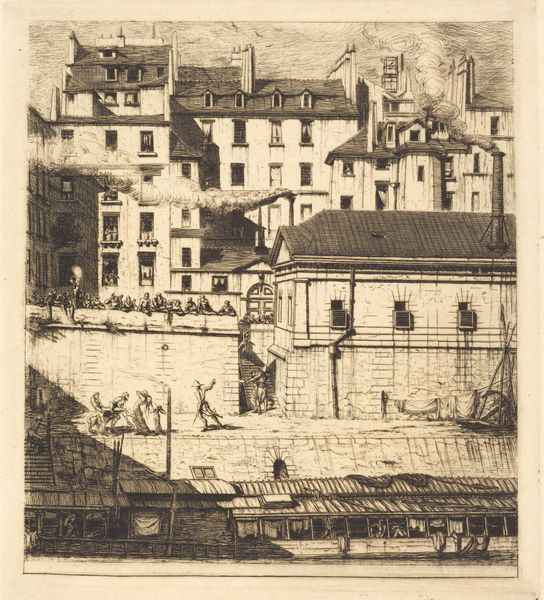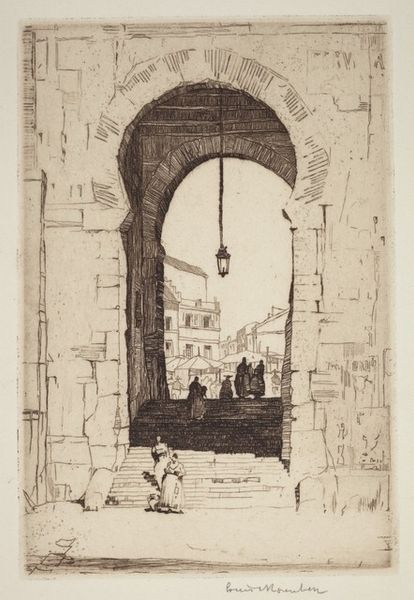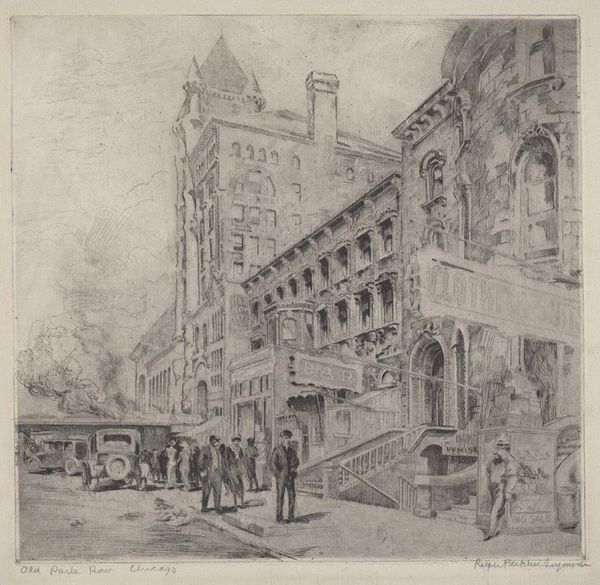
print, etching
# print
#
etching
#
landscape
#
cityscape
#
realism
Dimensions: plate: 25.4 × 18.57 cm (10 × 7 5/16 in.) sheet: 30.64 × 21.91 cm (12 1/16 × 8 5/8 in.)
Copyright: National Gallery of Art: CC0 1.0
Curator: Let's take a closer look at Ruel P. Tolman’s etching, "E Street, with a View of the Post Office Clock Tower," created in 1913. Editor: My immediate reaction is that it evokes a strong sense of turn-of-the-century urban hustle, the moodiness amplified by its monochrome palette and the intricate crosshatching. Curator: Absolutely. Etching, as a printmaking process, inherently connects artistic vision to industrial techniques. The metal plate itself, the acid, the press—it's a collaborative dance between the artist's hand and mechanical reproduction. You really see that come through with the sharp contrast of shadow in this work, emphasizing a growing American skyline built, literally, by manual labor. Editor: Yes, and what about the visual politics of that labor? Look at how the image frames working-class individuals and their animal labor against the backdrop of governmental architecture: The clock tower looming, as if representing state surveillance of time and the laboring body. There is also a clear distinction between this type of urban scene and more common idyllic landscape imagery of the period. This really invites consideration of class, the societal impact of modernization and how identity intersects with the development of Washington D.C. itself. Curator: That's fascinating. When considering the materiality, it's vital to acknowledge that the image likely reached a much wider audience through printed reproductions, disseminating this particular vision of progress. Consider the social accessibility of such a print versus an oil painting. This type of imagery would certainly have found its way into commercial and governmental spaces. Editor: Precisely! By representing marginalized labor as a core visual component, the print critiques, or at least complicates, notions of purely upward mobility through honest labor. It is easy to miss amongst the skyline and architectural imagery but speaks to the experience of race and class at the time. Curator: Indeed. By examining its making, dissemination, and context, we can start to untangle the complex social and material narratives embedded within this deceptively simple etching. Editor: Exactly, analyzing the symbolism within this urban landscape truly creates opportunities to consider questions surrounding progress and marginalization in American cities during the early 20th century.
Comments
No comments
Be the first to comment and join the conversation on the ultimate creative platform.
